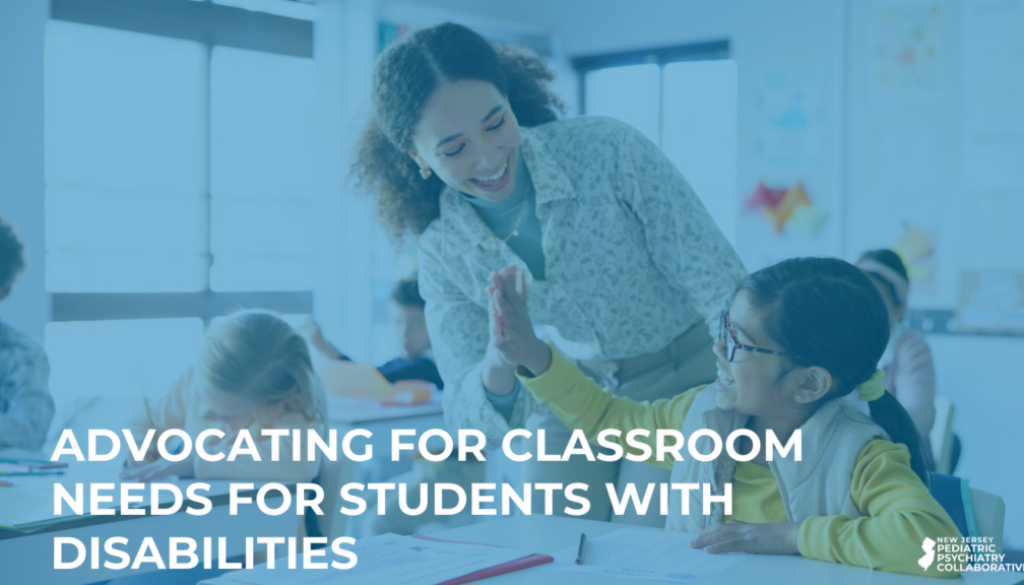Advocating for Classroom Needs for Students with Disabilities: Understanding 504 Plans vs. IEPS
By Debra E. Koss, MD
Both 504 Plans and Individualized Education Programs (IEPs) provide support to students with disabilities but each program has important distinctions. Student advocates, including parents and pediatric primary care providers, should be aware of the laws associated with these programs, the school personnel who are involved in determining eligibility and planning for services, and the types of accommodations that are available.
504 Plan
Students may receive services under Section 504 of the Rehabilitation Act of 1973, an antidiscrimination law which requires that the needs of students with disabilities be met as adequately as the needs of non-disabled students. This is commonly referred to as a 504 plan and provisions under this plan are available to students in grades K – 12. Each public school will identify a 504 coordinator, (usually an assistant principal or a guidance counselor) who will ensure procedural compliance and coordinate the development, maintenance, and implementation of 504 plans. The 504 coordinator will contact all school staff involved in the provision of accommodations and make them aware of their duties and responsibilities. The plan itself should be updated at least annually.
504 plans are developed by a committee of individuals who have knowledge about the student and the types of accommodations available in the school. This committee may include the student’s parent(s)/guardian(s), the student’s teacher(s), the guidance counselor, the school nurse, and the 504 coordinator. A student may also be invited to participate in the meeting depending on their age and maturity. Additionally, special educators often serve as advisors to 504 committees. The student’s disability and corresponding need for reasonable accommodation are identified and documented in the plan. Likewise, the plan delineates the specific accommodations that will be implemented, such as preferential seating, extended time on tests, chunking of large assignments into smaller parts, and assistance with note-taking. A 504 plan does not include special education instruction. All accommodations are delivered in the general education setting.
Individualized Education Program (IEP)
Students with disabilities who require specialized instruction fall under the protection of the Individuals with Disabilities Education Act of 1975 (IDEA) which governs how states and public agencies provide early intervention, special education, and related services to individuals with disabilities. This law ensures that all students aged 3-21 have access to free appropriate public education (FAPE). The IDEA process is more involved than that required under Section 504. Students must meet two requirements: 1) the student has one of 13 listed disabilities, and 2) the identified disability affects performance at school or the ability to learn without specialized instructions. The disabilities include:
- Autism
- Deaf-blindness
- Deafness
- Emotional Regulation Impairment
- Hearing Impairment
- Intellectual Disability
- Multiple Disabilities
- Orthopedic Impairment
- Other Health Impaired
- Specific Learning Disability
- Speech or Language Impairment
- Traumatic Brain Injury
- Visual Impairment
A parent or teacher may request an evaluation of their student at any time. The school will then provide a detailed plan for assessment, including tests to measure academic achievement, cognitive functioning, communication skills, motor and adaptive skills, and social-emotional functioning. Once the parent consents to the evaluation, the school will identify the appropriate school personnel to proceed with testing, including a psychologist, learning consultant, social worker, occupational therapist, physical therapist, or speech therapist. Results will be shared with the parents, and student as appropriate, including eligibility determination, present level of academic achievement and functional performance, the impact of disability on learning, student’s strengths and skills, and finally recommendations for intervention.
Under the IDEA, specialized instruction and accommodations are provided in accordance with a plan called an Individualized Education Program, known as an IEP. A student’s IEP is a legal document, which in part, sets forth the duties and responsibilities of the school district and staff regarding that student. It is the responsibility of special educators, regular education teachers, administrators, counselors, and other professional educators to be thoroughly familiar with the provisions of the IEP for each of their students with disabilities. In addition to special education, these provisions may include classroom modifications, supplemental aids and resources, and behavioral interventions. Under IDEA, the student is guaranteed to receive these services in the least restrictive educational environment. An IEP is reviewed annually and a student receiving IEP services is reevaluated every three years.
In conclusion, collaboration between parents, school districts, and pediatricians is necessary and fundamentally leads to a comprehensive, student-centered plan. While the request for a 504 or IEP evaluation may be initiated by the parents or the district, schools must obtain parental consent prior to conducting an evaluation. Pediatricians may also advocate for the student and offer medical diagnoses and observations as to how said diagnoses impact learning. Ultimately the school district’s evaluation team will conduct the evaluation; review input from parents, pediatricians, and other specialists; determine eligibility; and make recommendations for accommodations and special services. Parents must then provide written consent before an IEP may be implemented.
Additional information on 504 Plans and IEPs is available at:
American Academy of Child & Adolescent Psychiatry
Statewide Parent Advocacy Network
Author Profile:


Debra E. Koss, MD
Clinical Assistant Professor, Department of Psychiatry Rutgers-RWJMS
NJPPC Project Manager for the New Jersey Psychiatric Association




